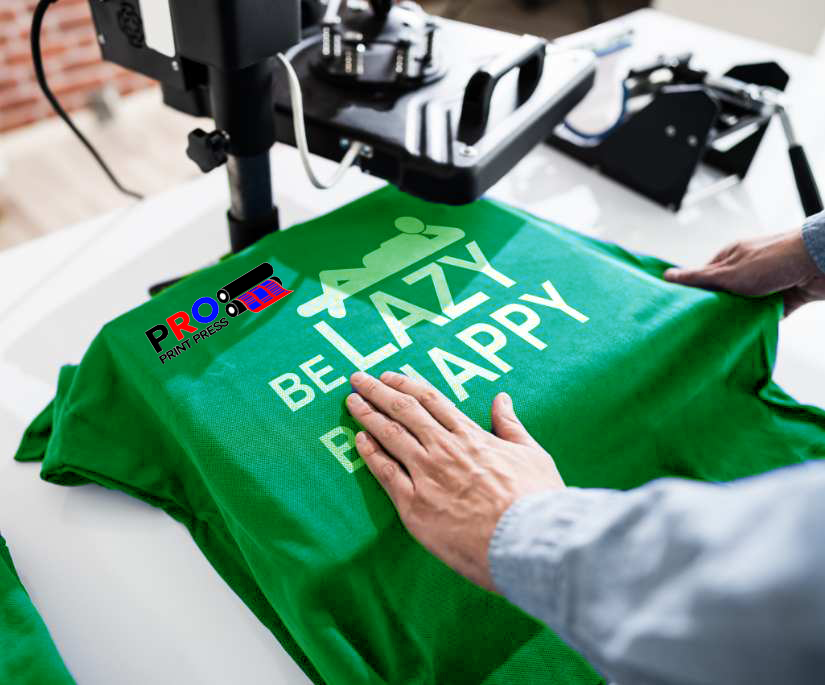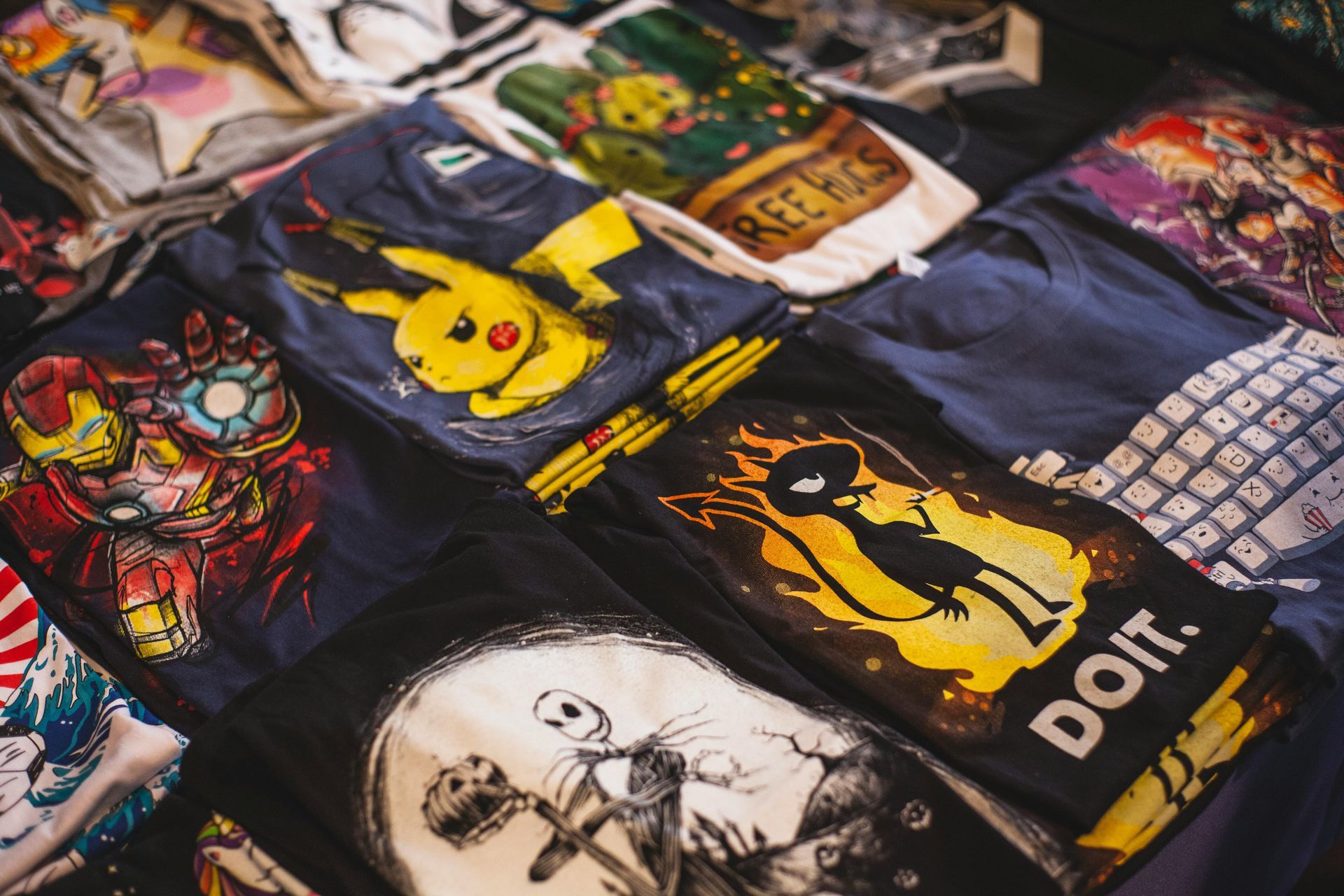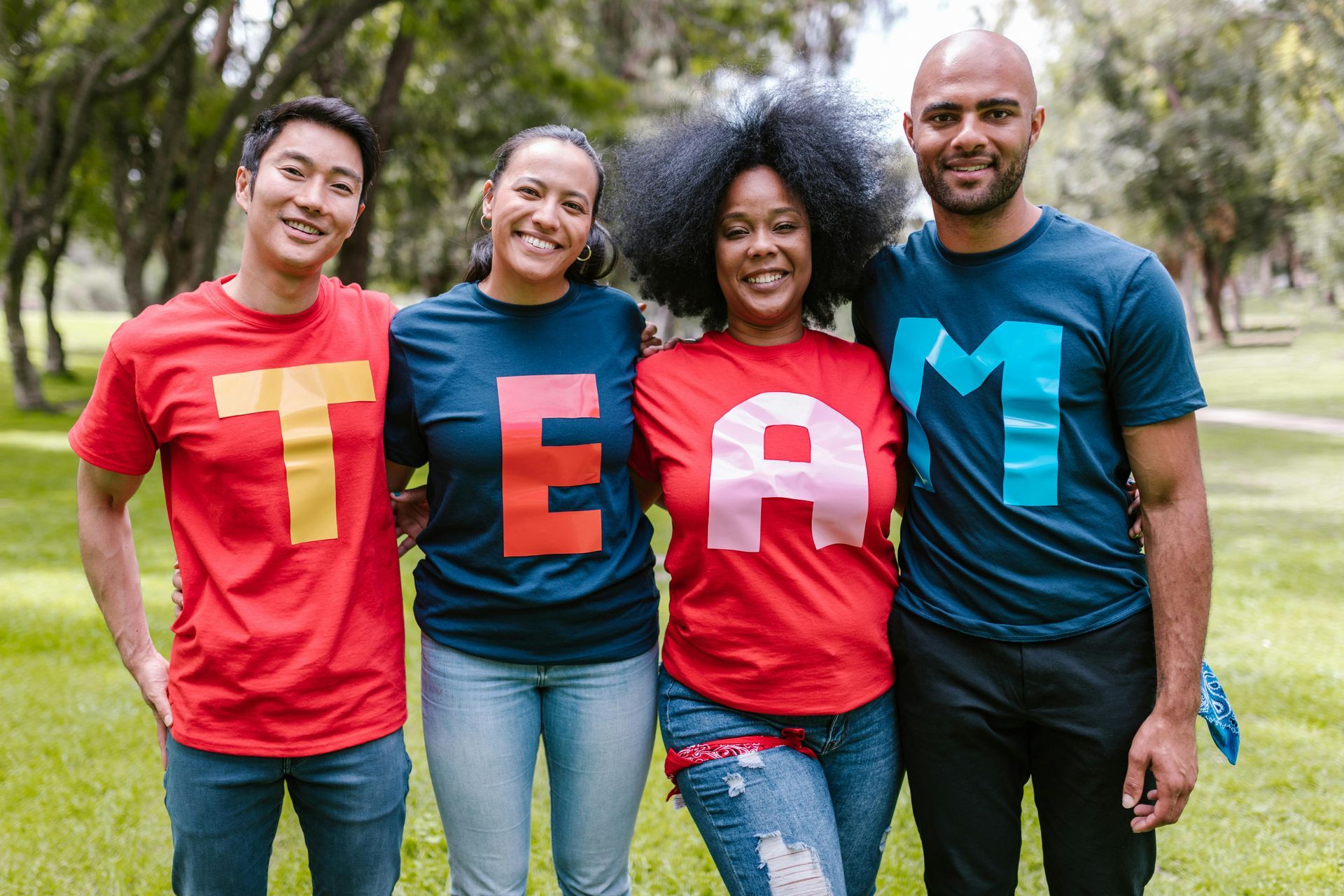24/7 Shopping
We are dedicated to building long-lasting relationships with our clients
24/7 Shopping
We are dedicated to building long-lasting relationships with our clients
Table Of Contents:
- Ultimate Guide to Best Custom T-Shirt Printing Options
- An Overview of Best Custom T-Shirt Printing Options
- Analyzing Different T-Shirt Printing Methods
- Selecting the Right Custom T-Shirt Printing Method
- Tips for Creating High-Quality Custom T-Shirts
- Frequently Asked Questions About Custom T-Shirt Printing
- Next Steps to Start Your Custom T-Shirt Printing Journey
- Conclusion
Ultimate Guide to Best Custom T-Shirt Printing Options
Are you struggling to find the best custom T-shirt printing options for your needs? In this ultimate guide, we will analyze various printing methods, helping you understand their pros and cons. You'll learn tips on creating high-quality designs that stand out. By the end of this article, you'll be equipped to make informed decisions and avoid common mistakes, ensuring your custom T-shirts reflect your vision perfectly. Let's dive into the world of custom T-shirt printing, where your ideas can come to life.
An Overview of Best Custom T-Shirt Printing Options
Understanding the benefits of custom T-shirt printing is essential for making informed choices for your brand. When selecting an apparel printing company near me, you will discover key factors to consider when selecting a printing method, such as digital printing or embroidery, and how mesh options can influence the final product. Additionally, learn about popular applications for custom T-shirt printing, catering to ladies’ fashion and promotional events.
Understanding the Benefits of Custom T-Shirt Printing
Custom T-shirt printing offers numerous advantages for your branding and promotional needs. By using synthetic fabrics like polyester or nylon, you get durability and vibrant colors, ensuring your designs stand out. Creating a stencil for the design allows for precision and consistency across your inventory, while using a mockup can help visualize the final product before printing, ensuring it meets your expectations.
Key Factors to Consider When Choosing a Printing Method
When selecting a printing method for your custom T-shirts, consider factors such as design complexity, fabric type, and intended use. Heat transfer and discharge printing offer distinct advantages; heat transfer is great for intricate designs and vibrant colors, while discharge printing provides a softer feel by dying the fabric directly. Additionally, think about the logistics, including packaging and drop shipping options, which can enhance your fulfillment process and customer experience.
Popular Applications for Custom T-Shirt Printing
Custom T-shirt printing serves various applications, ranging from promotional events to team uniforms. Businesses frequently use dye or heat transfer methods to create eye-catching designs that resonate with their brand identity, often utilizing platforms like RushOrderTees for efficient production. For sports teams, employing a vinyl cutter allows for easy customization of each uniform, ensuring that each player stands out while maintaining a cohesive look.
Now that you have a grasp of the best custom options, it’s time to look closer at how each method of t-shirt printing works. Understanding these techniques will help you choose the right one for your needs.
Analyzing Different T-Shirt Printing Methods

Direct-to-Garment printing offers an environmentally friendly option, ideal for intricate designs on cotton fabrics, while exploring screen printing is perfect for bulk orders, providing durability and cost-effectiveness. Investigating dye sublimation brings all-over designs to life, and evaluating heat transfer vinyl printing presents versatility for various projects. Assessing methods like plastisol transfers and airbrushing further expands your options in custom T-shirt printing.
Direct-to-Garment Printing and Its Advantages
Direct-to-Garment (DTG) printing is an innovative method that utilizes specialized machines to apply custom ink directly onto the fabric, making it ideal for intricate designs and vibrant colors. This approach is particularly advantageous for small to medium-sized orders, as it allows for quick turnarounds without sacrificing quality. Unlike heat transfer vinyl or sublimation printing, which can alter the fabric's feel, DTG maintains the softness of the garment, making it an excellent choice for casual wear and sportswear alike.
Exploring Screen Printing for Bulk Orders
Screen printing is a popular choice for bulk custom apparel orders due to its efficiency and quality. Utilizing a squeegee to push ink through a stencil onto the shirt or sweatshirt fabric, this method can produce vibrant colors and detailed designs, making it ideal for large quantities. When producing items like branded merchandise or team uniforms, screen printing not only ensures uniformity across every sleeve but also offers a cost-effective solution, especially as order sizes increase.
Investigating Dye Sublimation for All-Over Designs
Dye sublimation is an excellent choice for print on demand projects, especially when you aim for all-over designs on crew neck shirts made of polyethylene terephthalate (PET). This method infuses dye into the fabric, allowing for vibrant colors and intricate patterns that truly stand out without affecting the garment's texture. Quick turnaround time is often achievable with dye sublimation, making it a favored option for businesses looking to deliver quality custom apparel efficiently.
Evaluating Heat Transfer Vinyl Printing for Versatility
Heat transfer vinyl printing stands out for its versatility, allowing you to create custom designs on various garments, including polo shirts and Gildan apparel. This method utilizes specialized ink that adheres to the fabric, making it easy to apply intricate designs or clip art to your shirts. The price of heat transfer vinyl printing is often budget-friendly, especially for smaller runs, enabling you to achieve high-quality results without significant investment.
Assessing Other Methods Like Plastisol Transfers and Airbrushing
When considering methods like plastisol transfers and airbrushing for custom T-shirt printing, it's essential to evaluate both quality and sustainability. Plastisol uses an emulsion that requires heat to adhere to fabric, allowing for strong designs, particularly when producing larger quantities. Airbrushing, on the other hand, offers the ability to create unique, detailed artwork but may involve additional setup and cleanup, impacting material waste and overall efficiency.
Each printing method has its strengths and weaknesses. Understanding these will guide you in selecting the right custom T-shirt printing method for your needs.
Selecting the Right Custom T-Shirt Printing Method

When selecting the right custom T-shirt printing method, consider various factors affecting your choices. Design complexity plays a crucial role; for simple graphics, methods like heat press may suffice, while intricate artworks require more advanced techniques. Budget considerations are equally important; evaluating costs can help you identify the best options, including the use of tank inks for efficiency.
Factors Affecting Your Choice of Printing Technique
When determining the right printing technique for your custom T-shirts, several factors come into play. The complexity of your design significantly influences your choice; simpler graphics often align well with heat transfer methods, while intricate designs benefit from direct-to-garment printing. Additionally, your budget plays a critical role, as various methods have different cost structures, making it essential to evaluate your financial resources before making a decision.
Matching Printing Methods to Design Complexity
When matching printing methods to design complexity, it's essential to assess the level of detail in your artwork. For straightforward designs, methods like heat transfer or vinyl printing may be sufficient, providing quick solutions. On the other hand, if your graphic involves intricate patterns or a variety of colors, direct-to-garment printing is ideal, as it can reproduce fine details without compromising quality, ensuring your custom T-shirts reflect your brand’s vision accurately.
Budget Considerations for Custom Printing
When considering your budget for custom T-shirt printing, it is essential to evaluate not only the upfront costs but also the long-term value offered by different printing methods. For instance, while direct-to-garment printing may involve a higher initial investment, it provides vibrant results and can handle intricate designs effectively, making it worthwhile for quality-focused projects. By mapping out your budget with these factors in mind, you can select a printing option that aligns with your financial goals while ensuring that the final product meets your brand's standards.
With the right printing method chosen, the next step is bringing your vision to life. Learn how to craft high-quality custom T-shirts that truly stand out and capture attention.
Tips for Creating High-Quality Custom T-Shirts
To create high-quality custom T-shirts, start by choosing the right fabric to enhance durability and comfort. Next, focus on designing graphics that will optimize printing quality, ensuring your visuals stand out. Don't overlook the importance of color selection and palette, as these elements play a significant role in the overall appeal of your T-shirts. Each of these considerations will significantly impact the final product you deliver.

Choosing the Right Fabric for Your T-Shirts
Choosing the right fabric for your custom T-shirts is crucial for achieving both comfort and durability. Opt for cotton for its softness and breathability, making it an excellent choice for everyday wear. Alternatively, consider blends like cotton-polyester for added durability and color retention, especially if your design requires vibrant printing techniques. By understanding the properties of each fabric, you can ensure your final product not only meets your aesthetic goals but also satisfies the practical needs of your customers.
Designing Graphics for Optimal Printing Quality
Designing graphics for optimal printing quality requires attention to detail and an understanding of the printing process. Utilize high-resolution images to ensure clarity and sharpness, avoiding pixelated results that could detract from your design's appeal. Additionally, consider color profiles that are compatible with your chosen printing method, as this will enhance vibrancy and accuracy, ultimately leading to a more professional-looking custom T-shirt.
Importance of Color Selection and Palette
Choosing the right colors for your custom T-shirts can significantly impact their appeal and effectiveness in promoting your brand. Selecting a cohesive color palette that aligns with your brand identity not only enhances visual interest but also resonates with your target audience. By understanding color psychology and how it influences perception, you can create designs that attract attention and convey the right message, ensuring your custom T-shirts make a lasting impression.
You’ve learned the art of making custom t-shirts that stand out. Now, let’s address some common questions that can help clarify your printing choices.
Frequently Asked Questions About Custom T-Shirt Printing
Understanding the best custom T-shirt printing options is essential for your decision-making process. You'll learn about the most durable printing techniques to ensure longevity, explore options ideal for small business startups seeking cost-effective solutions, and discover how to order samples before making a commitment, giving you the confidence to proceed with your custom apparel project.
What Are the Most Durable Printing Techniques?
The most durable printing techniques for custom T-shirts include screen printing, direct-to-garment (DTG), and dye sublimation. Screen printing stands out for its longevity, especially when producing bulk orders, as it creates vibrant and resilient designs that withstand multiple washes. Conversely, DTG is ideal for intricate designs, providing a soft feel without compromising on durability, making it suitable for higher-end apparel. Understanding these options allows you to choose the best method that aligns with your branding needs and ensures that your custom T-shirts will last over time.
Which Options Are Best for Small Business Startups?
For small business startups, selecting the right custom T-shirt printing options can significantly impact your brand's visibility and effectiveness. Direct-to-garment (DTG) printing is an excellent choice for intricate designs, allowing you to create eye-catching apparel without the need for large inventories. Alternatively, screen printing works well for bulk orders, providing cost efficiency while maintaining high quality, making it a practical option for promotional events or merchandise that reinforces your brand identity.
How Can I Order Samples Before Committing?
To order samples before committing to custom T-shirt printing, visit the website of your chosen printing company. Many services offer sample shirts for a small fee, allowing you to assess quality, fabric, and printing techniques firsthand. By requesting samples, you can ensure the final product aligns with your brand's expectations, ultimately aiding in making a more informed decision for your promotional needs.
You've got questions. Now, let's turn that knowledge into action and guide you on your custom t-shirt printing journey.
Next Steps to Start Your Custom T-Shirt Printing Journey
To kickstart your custom T-shirt printing journey, begin by selecting a reliable printer or printing service that aligns with your needs. Next, explore effective strategies to promote and sell your custom T-shirts to reach your target audience. Don’t overlook the value of resources for continued learning and inspiration, which can enhance your designs and marketing efforts.
Choosing a Reliable Printer or Printing Service
When choosing a reliable printer or printing service for custom T-shirts, consider their experience in the industry and the range of printing techniques they offer. Look for testimonials and reviews from previous clients to gauge their reputation and the quality of their work. Additionally, ensure they provide clear communication throughout the order process, as this will help you avoid potential misunderstandings and ensure your designs are accurately represented in the final product.
How to Promote and Sell Your Custom T-Shirts
To effectively promote and sell your custom T-shirts, focus on utilizing social media platforms where your target audience spends time. Create engaging posts that showcase your unique designs, and consider running targeted ads to reach potential customers who are likely to appreciate your brand. Collaborating with influencers or hosting contests can also enhance visibility and drive interest, ultimately increasing sales and establishing a loyal customer base.
Resources for Continued Learning and Inspiration
To further your knowledge in custom T-shirt printing, explore online resources such as industry blogs, tutorials, and webinars that provide insights on the latest trends and techniques. Websites like Printful and T-Shirt Magazine offer educational articles that cover various printing methods and design tips to help you refine your approach. Engaging with these materials not only enhances your skills but also inspires innovative ideas for your projects, ensuring your custom T-shirts align with your vision and market demands.
Conclusion
Understanding the best custom T-shirt printing options empowers you to enhance your brand's visibility and impact. By considering factors such as printing methods and fabric choices, you can ensure high-quality results that align with your specific needs. Emphasizing the importance of design complexity and budget will help you make informed decisions that resonate with your target audience. This comprehensive knowledge not only elevates your promotional efforts but also solidifies your brand's identity in a competitive marketplace.
Get a quote
We will get back to you as soon as possible.
Please try again later.
Phone Support Hours
- Mon - Fri
- -
- Sat - Sun
- Closed




